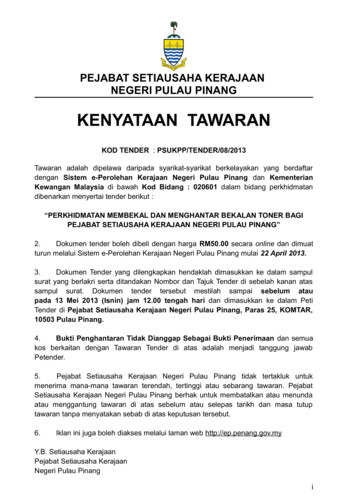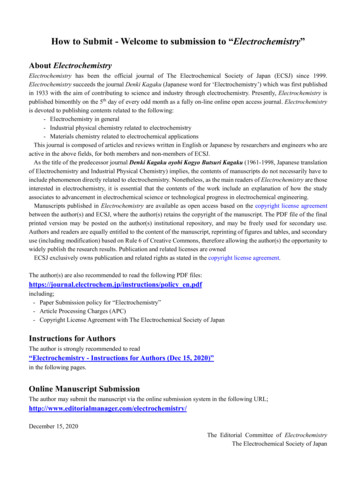Second Annual Meeting Of The Serbian Neurosurgical Society
1
2
3
4
5
6
7
88
PRELIMINARY PROGRAMMEWednesday, October 19thThursday, October 20th07.00Registration08.00-09.00Opening CeremonyLukas Rasulic, SNSS PresidentTomislav Nikolic, President of the Republic of SerbiaZlatibor Loncar, Minister of Health of the Republic of SerbiaIgor Mirovic, President of Government of the AutonomousProvince of VojvodinaZoran Gojkovic, Secretary of Health Autonomous Province of VojvodinaVladimir Kostic, President of the Serbian Academy of Sciences and ArtsDusan Nikolic, Rector of the University of Novi SadSnezana Brkic, Dean of the Medical FacultyIvan Levakov, Director of the Clinical Center of VojvodinaDragan Dankuc, President of the Physicians Association of VojvodinaIoan Stefan Florian, EMN PresidentKresimir Rotim, SeENS PresidentPetar Vulekovic, OC PresidentHall 1Key note lectures09.00-09.20Milivoje Kostic lectureManagement of traumatic brachial plexus injuryMadjid Samii, GermanyINTRO Lukas Rasulic09.20-09.40Medico-legal aspects of alleged traumatic disc herniationAndre Grotenhuis, NederlandINTRO Kresimir Rotim09.40-10.00New directions in TBI researchAndrew Maas, BelgiumINTRO Petar Vulekovic10.00-10.20Multimodal Neuromonitoring: Possibilities and Impact on treatment ofsevere TBI patientsJurgen Meixensberger, GermanyINTRO Tomislav Sajko10.20-10.30Coffee breakWednesday, October 19th / Thursday, October 20thWelcome faculty receptionHall 120.00-22.00Hall 1Special guest lecture10.30-10.50Thoughts on social sciences and the brainRemzi Sanver, FranceINTRO Lukas Rasulic9
Hall 1Hall 1Thursday, October 20thPlenary session 1Moderators: Kresimir Rotim, Petar Vulekovic, Lukas Rasulic1010.50-11.05The Organization of the Emergency Response System in RomaniaDr. Raed Arafat, Secretary of State at the Ministry of Internal Affairs, Romania11.05-11.20Decompressive Craniectomy - Why we still perform it after the DECRAtrial?Ioan Stefan Florian, Romania11.20-11.35The auditory midbrain implant - a new prothesis for hearing restauration inneuronal deafnessAmir Samii, Germany11.35-11.50Traumatic carotid cavernous fistulae and dissections.Clinical impact and treatment optionsAndreou Alexandros, Greece11.50-12.05Microsurgical anatomy of the thoracic spine: the fundamentals of the thoracic spinal stabilityKenan Arnautovic, USA12.05-12.20Paradigm shift in traumatic brain injury: Does ”minimal” require maximalattention?Andras Buki, Hungary12.20-12.35The NOSTRA Trial in severe TBIAndreas Unterberg, GermanyHall 1Plenary session 2Moderators: Ioan Stefan Florian, Kenan Arnautovic,Tomislav Sajko12.35-12.50How much decompression should be done in cervical spine fracture withneurologic deficitUlrich Kunz, Germany12.50-13.05Management of craneocervcial fracturesJesus Lafuente, Spain13.05-13.20Epidemiology and prevention of TBI in Europe: New factsWolf Ingo Steudel, Germany13.20-13.35Surgical modalities and stabilization in the treatment of thoracolumbar spinefracturesKresimir Rotim, Croatia13.35-13.50Controversies in nerve transfers for upper brachial plexus palsydue to traction injuriesLukas Rasulic, Serbia13.50-14.05Decompressive Craniectomy: A Life Saver. Myth or Fact?Konstantinos Fountas, Greece14.05-14.45Lunch on symposiumMedtronic - Critical care and spine trauma portfolio
Hall 1Lobar haematomas: neuropathological and 7.0-tesla magnetic resonanceimaging evaluationJacques De Reuck, Belgium14.57-15.09The management of craniocerebral traumaFatos Olldashi, Albania15.09-15.21Abnormal Cognitive AgingJosé León-Carrión, Spain15.21-15.33Decompressive vs hinge craniectomy: difference in technique and outcomeIbrahim Omerhodzic, Bosnia and Herzegovina15.33-15.45Monitoring of posttraumatic cerebral hemodynamics by transcranial Dopplersonography - a novel perspectivesBruno Splavski, Croatia15.45-15.57Radiological Approach to NeurotraumatologySanja Stojanovic, Serbia15.57-16.09The Clinical and Neuropsychological Evaluation of the Brain InjuredProfessional (NFL) AthleteDomenic Paul Esposito, USA16.09-16.20Discussion16.20-16.35Coffee breakHall 1Oral presentations and free topicsModerators: Ibrahim Omerhodzic, Fatos Olldashi, Venko Filipce16.35-16.43The right timing to perform the craniectomyMatijaz Vorsic , Slovenia16.43-16.51Computerized static posturography and vestibular dysfunction in acuteperiod of concussionAlexander Andreev, Ukraine16.51-16.59The effect of early and postponed decompressive craniectomy on time spentin ICU and outcome in traumatic brain injury patientsDjula Djilvesi, Serbia16.59-17.07Decompressive craniectomy in the treatment of complex severe traumaticbrain injuryBoris Bozic, Croatia17.07-17.15Exogenous and endogenous factors that modulate opportunities forreemployment of persons living with sequels following spinal cord injuryAurelian Anghelescu, Romania17.15-17.25DiscussionHall 114.45-14.57Thursday, October 20thMain session 1Moderators: Konstantinos Funtas, Vincenzo Paterno,Mauer Uve Max11
Thursday, October 20thHall 11217.25-17.33The incidence of chronic subdural hematoma with patients on anticoagulanttherapyVesna Nikolov, Serbia17.33-17.41Additive technologies in skull defect reconstruction new porous and meshTitanium composite implantsAlexander Kravchuk, Ukraine17.41-17.49Controversion at the head injuryMilan Popovic, Slovenia17.49-17.57Unstable ICP in severe brain injury: a bad omenMaurizio Gladi, Italy17.57-18.05Psychological and psychiatric care for children with severe spinalcord injuryYuliya Sidneva, Russia18.05-18.15Discussion
Hall 214.05-14.45SEENS EC Meeting andSEENS General AssemblyCognitive and Emotional Disturbances after TBIKsenija Kolundzija, Serbia14.57-15.09Ruptured Anterior Communicating Artery Aneurysms.An experience of 513 cases treated using open microsurgery &a comparative view on management policies in two centersPles Horia, Romania15.09-15.21The role of functional brain cleavage in consciousness disordersOknina Ljubov, Russia15.21-15.33Surgery versus Conservative Treatment in Patients with TraumaticIntracerebral HemorrhageMirsad Hodzic, Bosnia and Herzegovina15.33-15.45When decompresive craniectomy improves the outcome of TBI patientsZbigniew Czernicki, Poland15.45-15.57Cranial head trauma in newborn infantsZlatko Kolic, Coffee breakHall 2Young neurosurgeons SNSS and EMN awardwith international participationInternational jury and moderators: Urlich Kunz,Verena Klamroth-Marganska, Amir Samii, Nebojsa Stojanovic,Branko Djurovic16.35-16.43Surgical vs nonsurgical treatment of intracranial traumatic haemathoma,single center expirienceMarko Samardzic, Serbia16.43-16.51Endoscope-assisted evacuation of chronic subdural haematomas 121 Minimally-invasive proceduresBogomil Iliev, Bulgaria16.51-16.59Selective brain hypothermia transiently improves the neurological recoveryin the mouse model of decompressive craniectomy after closed head injuryJacek Szczygielski, GermanyHall 214.45-14.57Thursday, October 20thMain session 2Moderators: Santiago Lubillo, Tomislav Cigic, Ihsan Solaroglu13
16.59-17.07Influence of anticoagulant therapy on development of chronic subduralhaematomas in Province of VojvodinaAntun Azasevac, Serbia17.07-17.15CT scoring scales at the early outcome predictors in patients with TBI:which one to use?Jagos Golubovic, Serbia17.15-17.23Diffusion tensor imaging and neuropsychological examination in mildtraumatic brain injuryMladen Karan, Hall 2Thursday, October 20th17.55-18.031418.03-18.15Discussion18.45Shutle bus for Welcome receptionTBA19.00-20.00Welcome reception – City HallMilos Vucevic, Mayor of the city of Novi SadZoltan Horvat, Secretary of health, city of Novi SadPetar Vulekovic, President of the Organizing Comittee20.00-23.00Presidential dinner - Restaurant PanchetaNjegoseva 12, Novi Sad - City Hall walking distance - by invitation only
Friday, October 21st07.00RegistrationHall 1Quality of Life after Traumatic Brain Injury: new developmentsJean-Luc Truelle, FranceINTRO Urlich Kunz08.20-08.40Management of chronic subdural hematomasPanagiotis Selviaridis, GreeceINTRO Lukas Rasulic08.40-09.00The Cybathlon - Moving People and TechnologyVerena Klamroth-Marganska, SwitzerlandINTRO Djula Djilvesi09.00-09.30Klaus won Wild lecturePeter Hutchinson, UKINTRO Ioan Stefan Florian09.30-09.40Coffee breakHall 1Plenary session 1Moderators: Alexandros Andreou, Aleksandar Caparoski,Andras Buki09.40-09.55Head trauma management in infants (0 -1 year old)Alexandru-Vlad Ciurea, Romania09.55-10.10Observations on the natural history of non-operative management of C2odontoid process fractures in the elderlyAndreas Demetriades10.10-10.25Reconstruction of the calvarial defects using 3D CAD-CAM cranioplastyDusan Vitanovic, Hungary10.25-10.40Is whiplash injury always a mild cervical spine injury?A study with motor evoked potentialsJacque De Reuck, Belgium10.40-10.55Microsurgical neuroanatomy of the cerebral venous drainage with regard tocomplete decompressive craniectomy - functional aspectsPeter Winkler, Austria10.55-11.10Common sense and scientific knowledge in neurotraumatology:contradicting or mutually complementing?Leonid Likhterman, Russia11.10-11.25Outcome from mild traumatic brain injury - predicting value of MRIPetar Vulekovic, Serbia11.25-11.40Management of neurosurgical intensive patients with post traumaticdecompressive craniectomyVincenzo Paterno, Germany11.40-11.50Coffee breakHall 108.00-08.20Friday, October 21stKey note lectures15
Hall 1Hall 1Friday, October 21stPlenary session 2Moderators: Feridun Acar, Oleg Zaitsev, Bruno Splavski1611.50-12.05The risk factor of blunt cerebrovascular injury in patients with cervical spineinjury: the SIMC experienceOkuma Masahiro, Japan12.05-12.20Current concept in treatment of mild traumatic brain injuriesPetrela Mentor, Albania12.20-12.35Is it time to change our conventional osmotic diuretics in patients withintracranial hypertension?Lubillo Santiago, Spain12.35-12.50Percutaneous transpedicular fixation in spinal traumaNikolay Gabrovsky, Bulgaria12.50-13.05Management of Cervical Spine and Spinal Cord InjuriesIhsan Solaroglu, Turkey13.05-13.20Indication for ICP monitoring in brain injuryUve Max Mauer, Germany13.20-13.35The influence of preinjury anticoagulation therapy on traumatic brain injurypatients outcomeTomislav Sajko, Croatia13.35-13.50Efficacy of DREZ lesioning in managing pain following spinal cord injuryMilan Spaic, Serbia13.50-14.30Lunch on symposium - IntegraHall 1Main session 1Moderators: Nikolay Gabrovsky, Mirsad Hodzic,Andreas Demetriades14.30-14.42What and why should be monitored in sever traumatic brain injuries?Zsolt Kopniczky, Hungary14.42-14.54Neuromonitoring in Intensive Care UnitBranko Milakovic, Serbia14.54-15.06Anaesthesia for Head TraumaSanja Vickovic, Serbia15.06-15.18The simple interrupted skin suture versus the running subcutaneous suturein cranial surgeryYavor Enchev, Bulgaria15.18-15.30Peripheral Nerve Injuries Strategies for ReconstructionLucian Fodor, Romania15.30-15.42Management of the posttraumatic seizuresSlavko Djuraskovic, Montenegro15.42-15.55Discussion
Hall 2Opening ceremonyKresimir Rotim, Petar Vulekovic, Ioan Stefan Florian, Lukas Rasulic,Sandra Milosevic, Biljana Kurtovic, Mirsada Custovic10.00-10.10The basics of health care process for neurotrauma:planning, individualization and documentingDragana Nikolic, Serbia10.10-10.20Contemporary algorithms in neurotraumatized patients - treatment from theaspect of a neuro-nurseMirsada Custovic, Bosnia and Herzegovina10.20-10.30The value of predictiveness in following the state of consciousnessIvana Dondo, Serbia10.30-10.40The nurse competencies in implementing the care protocol for intracranialhaemorrhage patientsIvan Havrlisan, Croatia10.40-10.50Guidelines for pre-hospital care management for patients with neurotraumaBiljana Kurtovic, Croatia10.50-11.00Validation of the outcome of treating alcoholized patients with head injury,case studyMirjana Sestak, Croatia11.00-11.10The standard clinical operational procedures for patients with traumaticinjury of cervical spineCecilija Rotim, Croatia11.10-11.20The characteristics of interdisciplinary approach to cervicocranial traction intreating cervical spine fracture and luxationAnita Brblic, Croatia11.20-11.30The human factor: the critical importance of effective team work andcommunication in providing safe treatment in operating theatreVesna Svir evic, Croatia11.30-11.40The protocol of operational technique of invasive intracranialpressure measurementSandra Milosevic, Serbia11.40-11.50An analytical presentation of scrub nurse procedures in neurosurgicaltreatment of subdural haematomaIvana Strbac, Serbia11.50-12.00Perioperational treatment of patients with epidural haemorrage:A five-year retrospective study of the Neurosurgery Clinic, KBC OsijekSanja Moser, Croatia12.00-12.15SeENS Nursing Section meetingHall 209.30-10.00Friday, October 21stNurses Symposium17
Hall 212.15-13.00SNSS EC Meeting andSNSS General AssemblyArea for posters13.00-14.00Poster sessionModerators: Peter Banczerowski, Milan Spaic, Boris BozicBlepharospasm as a consequence of chronic subdural haematoma:an interesting caseTomaz Velnar, SloveniaIndications, cautions & limits of interdisciplinary approach: physical &rehabilitation medicine – orthopedics, in patients with severe neurologicalpathology (preliminary data)Aurelian AnghelescuHall 2Friday, October 21stCraniocerebral trauma as result of a compressor tube explosion:a case reportTomaz Velnar, SloveniaDepressed and Open Skull Fractures Over the Superior Sagittal Sinus.Presentation of Three Cases and Literature ReviewHaralampos Gatos, GreecePosterior Fossa Skull Fractures, Two Illustrative Cases and Literature ReviewHaralampos Gatos, GreeceLocal fibrinolysis for traumatic intracranial hemorrhagesVadym Biloshytsky, UkraineLe Fort type 3 fracture or not? – CT scan reliabilityVuk Aleksic, SerbiaDural metastasis misdiagnosed as a bilateral subdural hematoma - a casereport and a review of literatureVuk Aleksic, SerbiaThe use of serum biomarkers as prognostic tool after traumatic brain injuryVadym Biloshytsky, UkraineObjectification of cognitive impairment in patients with mild traumatic braininjury through the use of integrative indexAndriy Huk, UkraineThe use of Mini-Mental State Examination in the assessment of mental statusof patients with mild traumatic brain injuries - yes or no?Zeljka Nikolasevic, SerbiaExecutive functions in patients with mild traumatic brain damageVojislava Bugarski, SerbiaPost-traumatic leptomeningeal cyst in a 9 month old infant - case reportBoris Djurovic, MontenegroDeath after consussion - case reportArsenije Radunovic, Montenegro18
Transarterial endovascular treatment of carotid-cavernous fistula - case report and review of litteratureAleksandar Spasic, SerbiaSurgical removal of intracranial fragments after gunshot injury – mandatoryor not? Intracranial and chest bullets retained for 35 years – a case reportand a review of literatureVuk Aleksic, SerbiaGrowing fracture - surgical treatment - case reportBojana Zivkovic, SerbiaIntraventricular intracranial pressure monitoring and it's role intreatment in patient with TBIAleksandar Miljkovic, SerbiaCraniotomy or craniectomy for acute subdural hematomaLuka Borovinic, MontenegroNeuroimaging after mild traumatic brain injury in Clinic of neurosurgery inBelgrade - is it really mild?Jelena Taskovic, SerbiaEmployment of persons with disabilities in RomaniaAurelian Anghelescu, RomaniaMaster center Conference room11.30-13.00EMN Presidium meetingHall 213.00-14.30EMN Members meetingHall 2Early outcome in patients with severe traumatic brain injuryDragan Jankovic, CroatiaFriday, October 21stEvaluation of neuroradiological parameters in the revised CT scoreas a predictor of outcome in patients with traumatic brain injuryFilip Pajicic, Serbia19
Hall 2Friday, October 21stMain session 2Moderators: Domenic Paul Esposito, Horia Ples, Djula Djilvesi2014.30-14.42Endoscopic spine surgery for traumatic disc herniationRobert Saftic14.42-14.54Management of Subaxial Cervical FracturesFatos Olldashi, Albania14.54-15.06Basic principles of the instrumentalization of old post-traumatic changes inthe cervical spineNebojsa Stojanovic, Serbia15.06-15.18The influence of anterior interbody fusion with allograft onto cervical spinefunctional outcomeGoran Lakicevic, Bosnia and Herzegovina15.18-15.30Spinal injury. Modern Aspect. Cyprus reality.Spyrou Michalakis, Cyprus15.30-15.42Second impact syndrome, controversiesFilipce Venko, Macedonia15.42-15.55Discussion16.15Shutle transportation for Petrovaradin Fortress and Gala dinner - TBA16:30-19:00Trip to Petrovaradin Fortress19.30-23:00Networking diner - Restaurant Alaska Barka
Saturday, October 22nd07.00RegistrationHall 1ICP monitoring: a contraversial issue for the NeurosurgeonFranco Servadei, ItalyINTRO Ioan Stefan Florian08.20-08.40State of art of the use of ICP and PtiO2 in severe brain traumaTito Arcadio Perilla Cepeda, ColumbiaINTRO Lukas Rasulic08.40-09.00Trends and challenges in rehabilitation following traumatic brain injuryNada Andjelic, NorwayINTRO Djula Djilvesi09.00-09.20New challenges for neurosurgical education and research in the globalscenario: an European perspectiveFrancesco Tomasello, ItalyINTRO Lukas RasulicHall 1Plenary sessionModerators: Francesco Tomasello, Alexandru Vlad Chiurea,Konstantinos Fountas09.20-09.35Towards a new gold standard to improve TBI clinical research - CAPTAINtrial design and rationaleJohannes Vester, Germany09.35-09.50Mood disturbances after severe traumatic brain injuryOleg Zaitsev, Russia09.50-10.05Severe head injury: looking for solutions. Finding new problems?Alberto Delitala, Italy10.05-10.20The modern concept of medical rehabilitation in patients after traumaticbrain injuryGordana Devecerski, Serbia10.20-10.35Where is the place of deep brain stimulation in severe comatose patientsfollowing traumatic brain injury?Feridun Acar, Turkey10.35-10.50Decompressive craniectomy, controversiesAleksandar Caparoski, Macedonia10.50-11.05”Extreme” indication of the endoscopic endonasal approach for treatment ofcomplex c2 odontoid fracturesMaurizio Iacoangeli, Italy11.05-11.20Coffee breakHall 108.00-08.20Saturday, October 22ndKey note lectures21
Hall 1Hall 1Saturday, October 22ndMain sessionModerators: Jacques De Reuck, Nebojsa Stojanovic,Nada Andjelic2211.20-11.32Computerized static posturography and statokinetic disorders in the acuteperiod of cerebral concussionVadym Biloshytsky, Ukraine11.32-11.44Treatment of unstable thoracolumbar junction burst fractures: short-segmentpedicle fixation with inclusion of the fracture level versus long-segmentinstrumentation - excluding the fracture levelMaurizio Iacoangeli, Italy11.44-11.56The impact of cerebrospinal fluid shunting on mental recovery in patientswith post-traumatic hydrocephalusYaroslav Latyshev, Russia11.56-12.08Delayed cerebral vasospasm following traumatic acute subdural hematomaKaima Suzuki, Japan12.08-12.20Cerebral venous thrombosis as a rare complication of traumatic brain injuryDusko Kozic, Serbia12.20-12.32Percutaneous transpedicular fixation in spinal traumaNikolay Velinov, Bulgaria12.32-12.44New trends in diagnosis management of TBI in childrenAlexandru Tascu, Romania12.44-12.56Neuroanatomy of coma due to traumatic axonal injuryEvgenia Alexandrova, Russia12.56-13.08TBI Quality Assurance: Quo Vadis?Andriy Huk, Ukraine13.08-13.20Sciwora or what else?Rasim Skomorac, Bosnia and Herzegovina13.20-13.32Psychological and psychiatric care for children with severespinal cord injuryEkaterina L'vova, Russia13.32-13.44Depression in patients with mild traumatic brain damageVojislava Bugarski, Serbia13.44-14.00Discussion
Hall 2Olfactory grove meningiomas (OGM): a multicentric perspective regardingplanning, surgical approaches, quality of life and global outcomeAlexandru-Vlad Ciurea, Romania11.28-11.36Unusual traumatic injury of high cervical spinal cord as a result ofdegeneration and oscillationTomaz Velnar, Slovenia11.36-11.44Surgical treatment and remarkable outcome after severe trauma brain injuryFahrudin Alic, Bosnia and Herzegovina11.44-11.52Neonatal head and spine injuriesZvonimir Dzelebdzic, Serbia11.52-12-00Illustrative Case and Literature Review of Bone Resorption after AutologousBone CranioplastyHaralampos Gatos, Greece12.00-12.08Brain temperature – an undervalued vital parameter of brain tissuehemostasis after brain injury. Can we monitor brain tissue temperaturenon-invasively in patients?Matthias Menzel, Germany12.08-12.16Prognostic factors for mortality in surgically treated patients with moderateto severe traumatic brain injuryMaria Laleva, Bulgaria12.16-12.24Pharmacotherapy of traumatic brain injuryVadym Biloshytsky, Ukraine12.24-12.32The impact of ICP monitoring on the degree of recovery of patients withsevere brain traumaAleksandar Kostic, Serbia12.32-12.40Quality of life assessment in patients with mild traumatic brain damageZeljka Nikolasevic, Serbia12.40-12.48Cranio-cerebral injuries caused by captive bolt gun in suicide attemptVladimir Papic, Serbia12.48-12.56The influence of post traumatic hormone deficiency on recoveryafter traumatic brain injuryDarko Stipic, Croatia12.56-13.04The histopathological and biochemical parameters of chronic subduralhematomaBoban Jelenkovic, Serbia13.04-13.12Upper extremity peripheral nerve injuries caused by gunshotVladimir Puzovic, Serbia13.12-13.20Susceptibility Weighted Imaging in diagnostics of mild traumatic brain injuryAlma Brakus, Serbia13.20-13.28Evaluation of the proximal stump in the C5 and C6 lesionsAndrija Savic, SerbiaHall 211.20-11.28Saturday, October 22ndSeENS Young Neurosurgeons forumOral presentations and free topicsModerators: Ioan Stefan Florian, Tomislav Sajko, Yavor Encev23
13.28-13.36Infection after combat related penetrating head injuriesGoran Pavlicevic, Serbia13.36-13.4413.44-14.00DiscussionHall 2Saturday, October 22ndHall 12414.00-15.00CONTROVERSIES IN NEUROTRAUMATOLOGY NOVI SAD 2016Final remarks and closing ceremony15.00-20.00Trip to Sremski Karlovci - Optional
http://snss-seensns2016.talkb2b.net2525
27
28
INTRO Urlich Kunz 08.20-08.40 Management of chronic subdural hematomas Panagiotis Selviaridis, Greece INTRO Lukas Rasulic 08.40-09.00 The Cybathlon - Moving People and Technology Verena Klamroth-Marganska, Switzerland INTRO Djula Djilvesi 09.00-09.30 Klaus won Wild lecture Peter Hutchinson, UK INTRO Ioan Stefan Florian 09.30-09.40 Coffee break .
May 02, 2018 · D. Program Evaluation ͟The organization has provided a description of the framework for how each program will be evaluated. The framework should include all the elements below: ͟The evaluation methods are cost-effective for the organization ͟Quantitative and qualitative data is being collected (at Basics tier, data collection must have begun)
Silat is a combative art of self-defense and survival rooted from Matay archipelago. It was traced at thé early of Langkasuka Kingdom (2nd century CE) till thé reign of Melaka (Malaysia) Sultanate era (13th century). Silat has now evolved to become part of social culture and tradition with thé appearance of a fine physical and spiritual .
On an exceptional basis, Member States may request UNESCO to provide thé candidates with access to thé platform so they can complète thé form by themselves. Thèse requests must be addressed to esd rize unesco. or by 15 A ril 2021 UNESCO will provide thé nomineewith accessto thé platform via their émail address.
̶The leading indicator of employee engagement is based on the quality of the relationship between employee and supervisor Empower your managers! ̶Help them understand the impact on the organization ̶Share important changes, plan options, tasks, and deadlines ̶Provide key messages and talking points ̶Prepare them to answer employee questions
Dr. Sunita Bharatwal** Dr. Pawan Garga*** Abstract Customer satisfaction is derived from thè functionalities and values, a product or Service can provide. The current study aims to segregate thè dimensions of ordine Service quality and gather insights on its impact on web shopping. The trends of purchases have
Chính Văn.- Còn đức Thế tôn thì tuệ giác cực kỳ trong sạch 8: hiện hành bất nhị 9, đạt đến vô tướng 10, đứng vào chỗ đứng của các đức Thế tôn 11, thể hiện tính bình đẳng của các Ngài, đến chỗ không còn chướng ngại 12, giáo pháp không thể khuynh đảo, tâm thức không bị cản trở, cái được
Le genou de Lucy. Odile Jacob. 1999. Coppens Y. Pré-textes. L’homme préhistorique en morceaux. Eds Odile Jacob. 2011. Costentin J., Delaveau P. Café, thé, chocolat, les bons effets sur le cerveau et pour le corps. Editions Odile Jacob. 2010. Crawford M., Marsh D. The driving force : food in human evolution and the future.
Le genou de Lucy. Odile Jacob. 1999. Coppens Y. Pré-textes. L’homme préhistorique en morceaux. Eds Odile Jacob. 2011. Costentin J., Delaveau P. Café, thé, chocolat, les bons effets sur le cerveau et pour le corps. Editions Odile Jacob. 2010. 3 Crawford M., Marsh D. The driving force : food in human evolution and the future.























